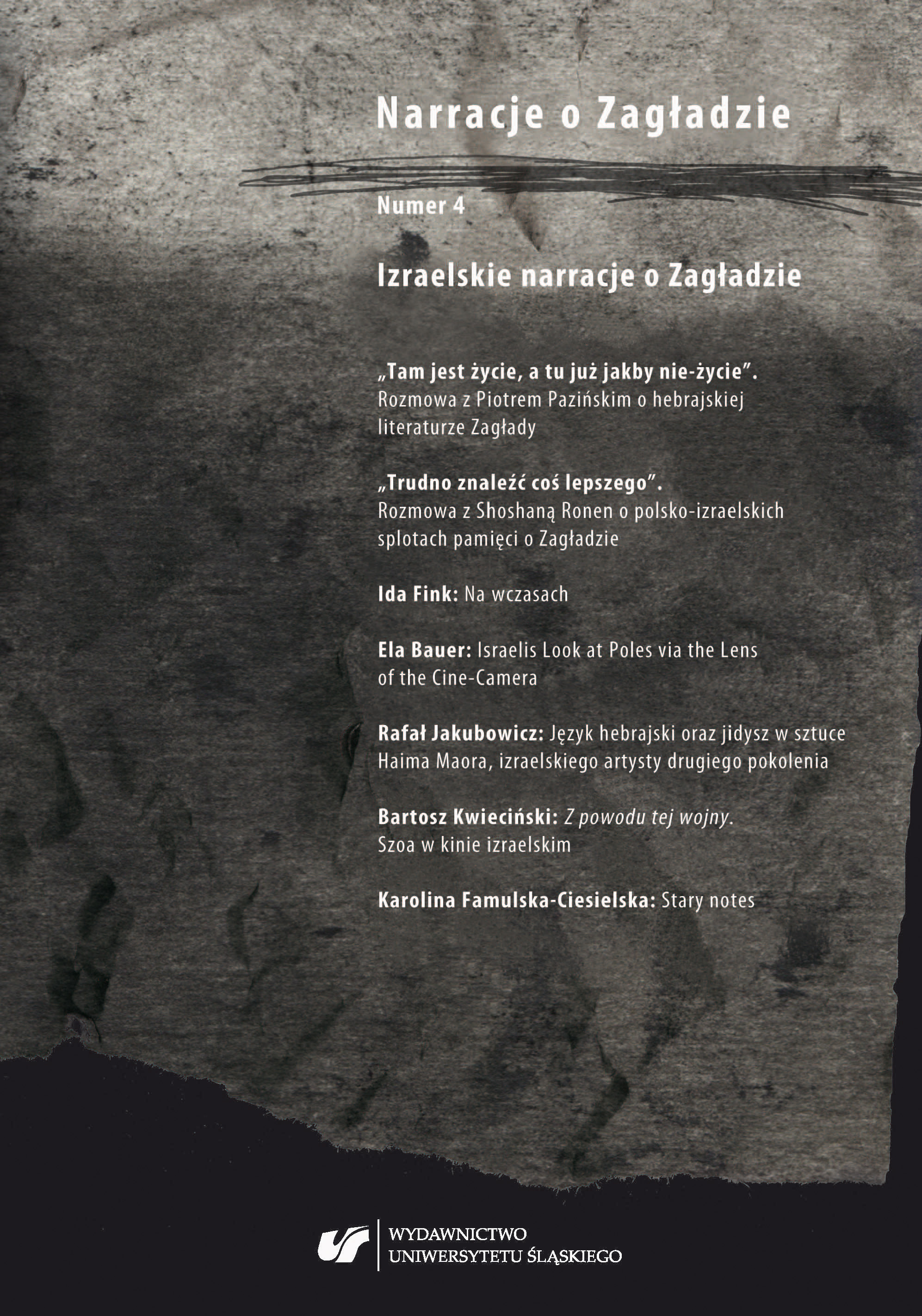The Portrayal of Holocaust Survivors in Israeli Feature Films Following the Six‑Day War
The Portrayal of Holocaust Survivors in Israeli Feature Films Following the Six‑Day War
Author(s): Steir‑Livny LiatSubject(s): Language studies, Language and Literature Studies, Philology, Theory of Literature
Published by: Wydawnictwo Uniwersytetu Śląskiego
Keywords: Holocaust; Holocaust survivors; Israeli culture; Israeli cinema; Israeli-Arab conflict
Summary/Abstract: In the aftermath of World War II, approximately 450,000 Holocaust survivors immigrated to the nascent State of Israel. The complex encounters of the newcomers with the Jews who already lived in the land were reduced to a series of superficial representations in Israeli feature films. Holocaust survivors were often portrayed as people broken in body and in spirit, who could be healed only in the land of Israel. After the 1961 Eichmann trial, first attempts were made at producing feature films which portrayed more complex images of survivors. As opposed to the shallow images of Holocaust survivors portrayed in cinema of the 1940s and 1950s, in which broken people turn into “new Jews” thanks to the help of veteran Jews, films such as The Cellar and The Hero’s Wife tried to shape a more complex image of survivors attempting to build new lives in the shade of the trauma. The myth of the “new Jew” peaked after the Six-Day War. The article claims that the euphoria that followed the 1967 war had a problematic effect on the image of Holocaust survivors and brought back the shallow, even negative representations of the 1940s and 1950s. This revision is discussed through the analysis of two prominent films that were produced in the decade following the 1967 war: He Walked through the Fields [Hu halachbasadot (Yosef Millo, 1967)] and Operation Thunderbolt [Mivtsa Yonatan (Menahem Golan, 1977)]. The article shows how these films placed Holocaust survivors on the margins of the narrative, strengthening their role as antithesis to the heroic warrior “new Jew.”
Journal: Narracje o Zagładzie
- Issue Year: 2018
- Issue No: 4
- Page Range: 96-112
- Page Count: 17
- Language: English

